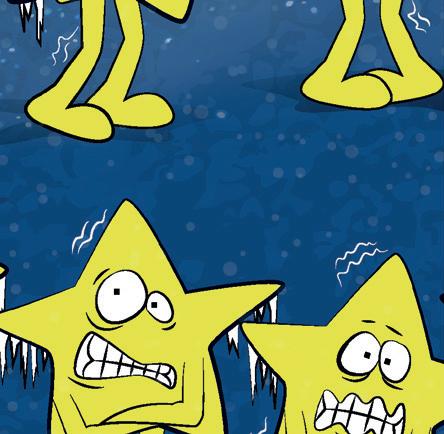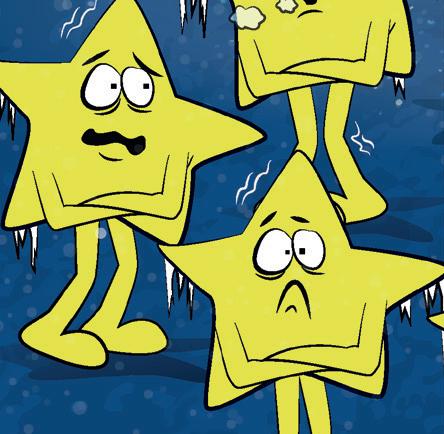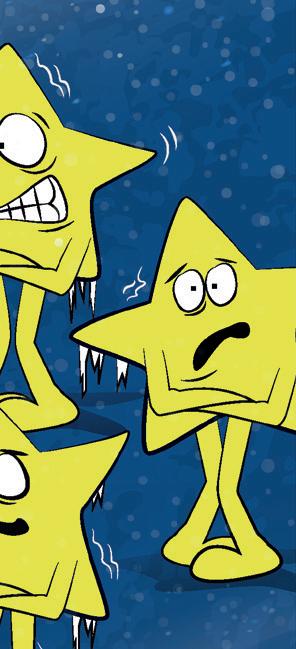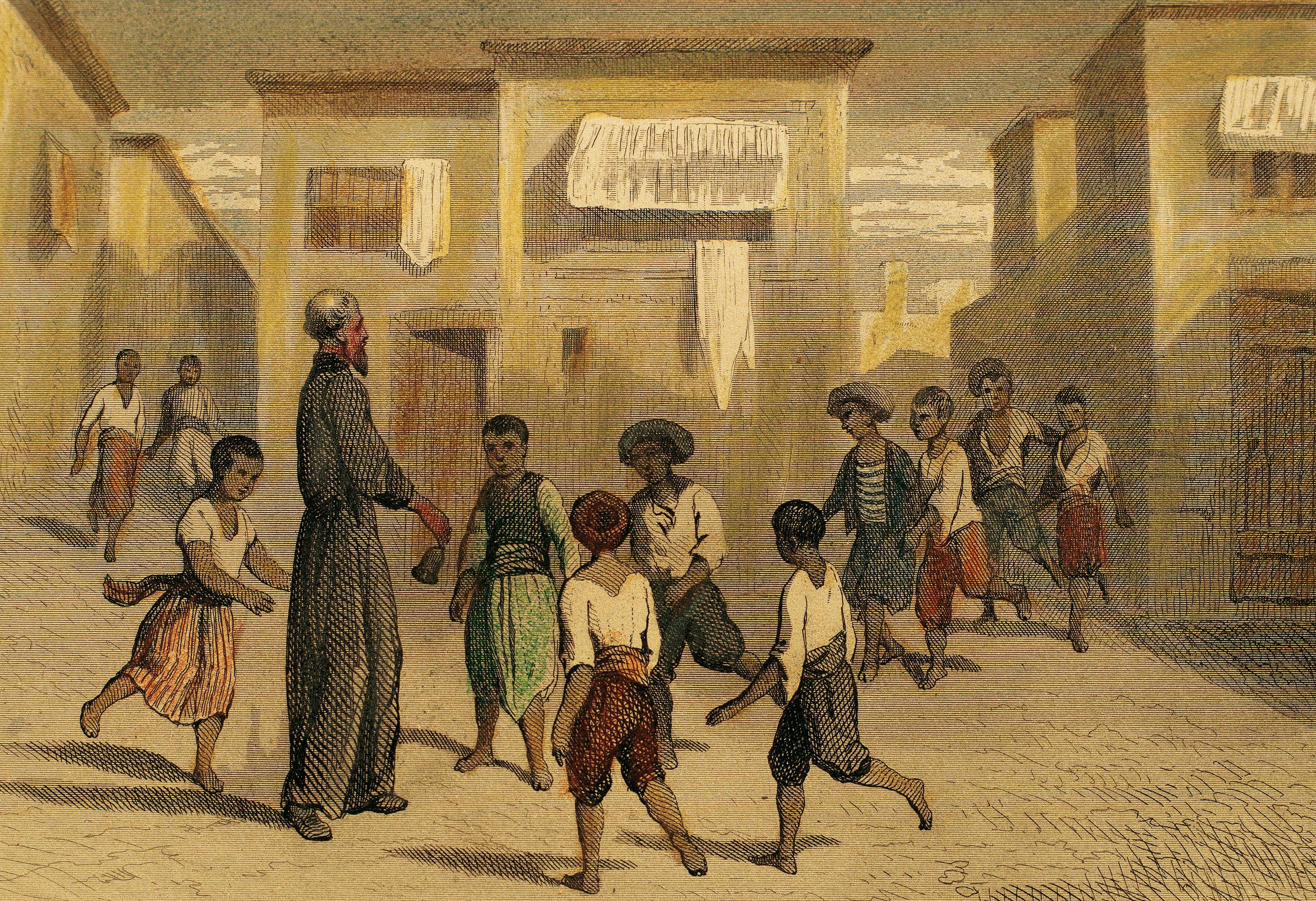EURASIA
Win-win cooperation is the future
and


and

18-19. Chinese loans: a possible way out of the climate crisis
– Szabolcs Mikó NEW AGE – NEW ROAD
21. The staggering story of China’s high-speed rails
RHYMES IN HISTORY
28-29.
–
ANCIENT KNOWLEDGE IN A MODERN WORLD
30-31.
The century of Asia: interview with Zhou Bo
– Joakim Scheffer
12-13.
The impending change of world order
– Márton Békés THE ECONOMICS OF GEOGRAPHY
14-15.
China could gain huge technological superiority
– Ágnes Solti
17. The art of economic warfare
– Anita Faust
2T2C: TALENT, TECHNOLOGY, CAPITAL, COGNITION
22. AI in agriculture
– Alexandra Zoltai CULTURE AND INNOVATION
24. Mining town on the steppe
– András Kosztur
25. Highlights of Eurasia: Iran
26. Book reviews
“A just cause finds great support, and a journey with many companions gets far. The SCO's development accords with the trend of our times and goes along with the direction of human progress
Xi Jinping
Hungary’s Prime Minister Viktor Orbán spoke about the transformation of world order, the shift in the balance of global power, the rise of China, the strengthening of Asia, the Thucydides Trap and the importance of the big “non-Western” international organisations in his recent speech at the 32nd Bálványos Summer Free University in Tusnádfürdő, Transylvania.
According to Hungary’s prime minister, “China is rising is different from that in which the United States rose: the United States emerged; China was, and is. We are really talking about a return”. China was, is and will be a 5,000-year-old civilisation that accounted for 25-30 per cent of the world economy from the beginning of our era until the violent appearance of the West. So it is not from the last 150 years that we should draw conclusions about China’s role in the world economy. And China is enjoying a renaissance. But it is also true that Russia has always been and will always be next to Europe; it cannot be wiped off the map, and relations between the Eurasian countries cannot be broken.
So while in history, we have seen multipolar international systems, a unipolar world order emerged after the Cold War. As early as August 1994, Deng Xiaoping said: “First, we must confront hegemonism and power politics to preserve world peace; second, we must build a new international political and economic order”. The framework for this new world order is outlined in the Chinese “Belt and Road Initiative”, which marks its 10th anniversary this year. Clearly, the ongoing transformation of the world order is not “recent” and has not started in the last few years. The Shanghai Cooperation Organisation was founded more than 20 years ago, the BRICS 17 years ago. They have a population of three to four billion people and offer former Western colonies and non-aligned countries a better perspective than the Western “cooperation” they have experienced throughout history.
Levente Horváth, Ph.D., Director of the Eurasia Center, Editor-in-Chief of Eurasia
The transformation of world order has been going on for decades, and it will take a long time to move from a unipolar to a multipolar world order again, or as Viktor Orbán said, “the settling of such a new equilibrium will take a whole generation”.
The Thucydides Trap, mentioned many times in previous issues of Eurasia and highlighted in Viktor Orbán’s speech, can be applied to current events. As he summed up: “The dominant great power tends to see itself as more benevolent and better-intentioned than it really is, and attributes malice to its challenger more often than is – or should be – justified. Consequently, the starting point for each opposing party is not the intentions of the counterpart, but its capabilities: not what the counterpart wants to do, but what it is capable of doing”.
Eurasia magazine helps the reader to step out of this Western information bubble and present the changes in global trends and economy, historical patterns and the real face of Asian countries so that we can prepare for the future and position ourselves and our countries accordingly.
Because history repeats itself...
THE WORLD IS SHIFTING TOWARDS A MULTIPOLAR WORLD ORDER WITH CHINA AND EURASIA OCCUPYING A MAJOR ROLE IN WORLD ECONOMY. WE SAT DOWN WITH AMERICAN ECONOMIST AND UNIVERSITY PROFESSOR JEFFREY SACHS TO DISCUSS THE END OF US HEGEMONY AND THE FUTURE OF NEW COOPERATIONS.

– Most countries of the world have not joined the Western sanctions against Russia. Is this a sign that the world is shifting from a unipolar to a multipolar order?
– There’s no question that we’re in a major geotectonic shift. In other words, geopolitics and the world economy are changing dramatically even without this war. The rise of China is a decisive event in modern world history because China has returned to being a major part of the world economy after more than a century in which it was greatly weakened by the European imperial powers, the United States and Japan. It’s not only China, of course, because Southeast Asia, the ASEAN countries are experiencing significant
economic and technological development and improvement of education levels and health levels. And with a lag of roughly 15 to 20 years, India is now becoming a very fast-growing region of the world. So Eurasia has long been home to the vast majority of humanity.
– What conclusion can the US draw from this situation?
– The US views the world as the US should lead, and everybody else should follow, and those that don’t follow are bad players. But what we see from the war in Ukraine is that most of the world doesn’t want to follow US leadership. I think most of the world would like to get along with the United States
“If Europe and China cooperate, world peace and sustainable development will be greatly advanced”
but not to have the US as the self-declared leader and maker of the rules. Most of the world wants to have broadly based economic development and prosperity, normal relations with neighbours, not blocks that are opposed to each other. Especially the developing world, which after all, is still roughly seven-eighths of humanity, wants to catch up in economic living standards and fears that the US approach divides the world rather than enables a world economy in which all countries can thrive. The US still has its illusion, but I think fast disappearing, that it is somehow the global leader because you can’t be the global leader if most of the world doesn’t want to follow. And that is the main lesson that the United States is learning from this war.
– How different is China’s approach towards building alliances different to that of the USA?

China’s approach is a win-win approach. It is not based on hegemony but on cooperation, mutual respect, and globalisation of the economy in a multipolar world.
– Iran has recently become a full member of the Shanghai Cooperation Organisation (SCO), and Belarus is set to join next year. What does this show, and how does it influence the regional status quo?
– The rapprochement between Saudi Arabia and Iran, recently brokered by China, is a huge step forward for regional and global peace. It has made possible the expansion of the SCO to include Iran. In general, the SCO is building an integrated Eurasian economy and diplomatic and security process. I very much hope that Europe will join the effort at Eurasian interconnectedness and peaceful cooperation.
The author is managing editor at Eurasia

The SCO is building an integrated Eurasian economy and diplomatic and security process”
IRAN GAINED FULL MEMBERSHIP OF THE SHANGHAI COOPERATION ORGANISATION (SCO) ON JULY 4. THIS IS ANOTHER MAJOR STEP TOWARD ENDING ITS GLOBAL ISOLATION AND BUILDING EVER CLOSER TIES WITH RUSSIA AND CHINA. TEHRAN WILL THUS BECOME THE NINTH MEMBER OF THE REGIONAL BLOC.

“The member states stressed the historical significance of the admission of the Islamic Republic of Iran to the SCO as a full Member State,” said the New Delhi. Indian Prime Minister Narendra Modi, who hosted the virtual summit, said he was “happy Iran is becoming a member of SCO,” adding that the
grouping had also paved the way for Belarus to become a permanent part of the bloc. Iran joins China, Russia, Kazakhstan, Kyrgyzstan, Pakistan, Tajikistan, India and Uzbekistan as full members.
China and Russia are looking to expand the Shanghai Cooperation Organisation by reaching out to countries sanctioned by the West and offering “alternative options” to the established order, analysts told the South China Morning Post. Although the bloc initially focused on security, the current climate and impact of Russia’s invasion of Ukraine have also driven efforts to boost its economic role, the newspaper wrote. By including Iran and putting Belarus on track for membership it had “sent a signal” to the world that there were options for greater Eurasian integration and to counter the Western liberal order, said Ilayda Nijhar, a global risk analyst at ODI, a global affairs think tank. “We are seeing the SCO increasing in popularity across ‘nonaligned’ parts of the world … Geopolitically, China and Russia are looking to play the long game here,” she said.
“Iran became a full member of the grouping and Belarus is set to join next yearPhoto: AFP/Sputnik, Sergei Bobylyov
Iran welcomed the opportunity to gain access to Eurasian trade routes and urged other members to create a mechanism to help Iran circumvent Western sanctions. The benefits of SCO membership are potentially significant for Iran. Due to its geopolitical location and energy resources, the country can become an important trading partner in the Middle East and will certainly work to strengthen its relations with the other member states. Given the comprehensive strategic partnership agreement Iran signed with China in 2021 and a similar agreement the Middle Eastern country signed with Russia in 2001, Iran’s full membership in the SCO was widely seen as inevitable. The signing of the document on Iran’s full membership in the SCO heralds a new phase of cooperation with other countries.

Both the SCO and BRICS member states are eager not to be controlled by Western countries through the means of imperialism and economic domination. Recently, Russia has tried to position the SCO as a kind of anti-NATO organisation. It advocated strengthening the military dimension of the bloc and proposed joint military exercises on Russian soil. Moscow sees the SCO as the core of an anti-Western bloc led by China and Russia.
It should not be forgotten, however, that the interests of the organisa-







tion’s member countries do not point in the same direction in many respects. For Chinese President Xi Jinping, participation in the summits provides an opportunity to regularly reinforce China’s position and reaffirm that it is an important player in Eurasia, including through the “Belt and Road Initiative”. Some countries with strained relations with the West are understandably critical of Western policies and present SCO as a possible alternative to Western influence. However, this approach does not necessarily mean that SCO has become a unified anti-Western alliance. Such assumptions ignore the different interests of all members of the organisation.


The author is a researcher at Eurasia Center
OBSERVE
CHINA, KAZAKHSTAN, KYRGYZSTAN, RUSSIA, TAJIKISTAN, UZBEKISTAN, INDIA, PAKISTAN


AFGHANISTAN, BELARUS, IRAN, MONGOLIA


ARMENIA, AZERBAIJAN, CAMBODIA, NEPAL, SRI LANKA, TURKEY








ASEAN, TURKMENISTAN,

“Far from being organised against the West, SCO contributes to the functioning of the multipolar world order”Photo: AFP, Iranian
PresidencyPhoto: AFP, Kremlin Press Office India hosted a virtual summit Iranian President Ebrahim Raisi attends the meeting Graphic design: Alexandra Érsek-Csanádi
THE 21ST CENTURY WILL BE CHARACTERISED BY THE COLLECTIVE RISE OF ASIAN COUNTRIES, ZHOU BO, SENIOR FELLOW AT TSINGHUA UNIVERSITY CENTRE FOR INTERNATIONAL SECURITY AND STRATEGY, TOLD EURASIA MAGAZINE.

– The competition and tensions between the US and China are intensifying. Where could be the most interesting conflict of interest between the two major power?
– The main battlefield of the competition between China and the US will be in Europe. Politically speaking, China is not competing with the United States. We have our own political system, but it’s only for us, we are not exporting revolutions. Economically speaking, it’s clear that the Chinese influence is growing around the world. Therefore we might also have competition with the US in the economic field, but I don’t believe that the US could actually win over China in the Global South. In this case, Europe is in a special position because the US has more allies there than anywhere else, but also China is the largest trading partner of the EU.

– China also gained significant influence in the Middle East. What can Beijing offer to these countries that the US couldn’t in the past decades?
– Traditionally speaking, China is the only major power that has been able to maintain good relations with everybody in the Middle East. Beijing is dedicated to economic activities only and doesn’t meddle in local politics. China has also been successful in mediating between Saudi Arabia and Iran, which raises further questions: can China do
more? I think it can. This success demonstrates that China can actually do something, and because of China’s good record, no one will doubt its impartiality. This is the real advantage of China.
– It is clear that the world order is already changing. What impact does the war in Ukraine have on this process?
– Before the war started, the centre of gravity had already started shifting towards Asia. This process has been accelerated by the war. The end result of this geopolitical shift is that this century would truly become Asia’s century. The 19th century was characterised by the so-called „Pax Britannica”, and the 20th century by „Pax Americana”. The 21st century won’t be „Pax Sinica”. It will be characterised by the collective rise of Asian countries.
The author is editor at Eurasia
The time has come for Beijing to play an even bigger role in the Middle East”
BY A GIVEN WORLD ORDER, WE MEAN NOT ONLY THE ECONOMIC AND INTER-STATE ORGANISATION OF THE INTERNATIONAL SYSTEM, BUT ALSO ITS LEADING IDEAS, OR MORE PRECISELY THEIR ORGANIC RELATIONSHIP. WHILE THE PREVIOUS WORLD ORDER WAS DEFINED BY UNIPOLAR NEOLIBERALISM, A MULTIPOLAR SYSTEM IS NOW EMERGING.
The USA, having lost its hegemony in the world, is trying to maintain at least control over the Atlantic and Pacific regions and to dominate Europe ever more closely, while the South-East of Eurasia is becoming more closely integrated with each other and the ‘Global South’ is also becoming noticeably more organised. Accordingly, alongside the US-led transatlantic-pacific bloc (AUKUS, G7, EU, NATO, Quad), a Eurasian pole is emerging in which, in addition to the Russian-Chinese axis, sometimes individually, sometimes in alliance, several regional middle powers (Iran, Pakistan, Saudi Arabia, Turkey) are participating, and the southern hemisphere should also be taken into serious consideration, with players such as the regional superpower
India and its allies (notably Indonesia), Latin America (especially Brazil) and Africa (mainly South Africa).
The latter two groupings are integrated, in addition to bilateral agreements of vary ing composition, by a number of in ternational fora, infrastructure in vestments and initiatives (BRICS, Eurasian Economic Union, Belt and Road Initiative, Shanghai Cooper ation Organisation). Moreover, the centre of gravity of the world economy is clearly shifting to wards Asia, which is geographi cally and economically correlat
ed with the Global South, home to half of the planet’s population, which accounts for more than half of world economic growth.

The nine countries participating in the Shanghai Cooperation Organisation (India, Iran, China, four Central Asian states, Russia and Pakistan) ac-
count for 23 per cent of the world’s land area, nearly half of its population and a quarter of world GDP.
A common forum for Eurasia and the Global South is the BRICS grouping, a cooperation between Brazil, Russia, India, China and South Africa, which covers 26.7 per cent of the world’s land area, 42 per cent of the planet’s population and more than a quarter of world GDP. Its popularity is demonstrated by the fact that Argentina and Iran have announced their intention to join, while Egypt, Indonesia, Saudi Arabia and Turkey are also seriously considering joining.
The author is a historian and political scientist, Director of the 21st Century Institute
“China is the world’s second- largest and fastestgrowing economy, alone accounting for nearly a fifth of world GDP”
ACCORDING TO A RECENT CRITICAL TECHNOLOGY TRACKER BY THE AUSTRALIAN STRATEGIC POLICY INSTITUTE (ASPI), THE WESTERN WORLD’S POSITION IN THE GLOBAL TECHNOLOGY RACE IS WEAKENING, WHETHER IT IS RESEARCH BREAKTHROUGHS OR THE ABILITY TO ATTRACT INTERNATIONAL TALENT, BOTH OF WHICH ARE CRITICAL TO THE EVOLUTION OF TECHNOLOGICAL DEVELOPMENT.
At the same time, China’s position is strengthening, which also means that the quality of Chinese research is increasingly recognised internationally. According to data from Japan’s National Institute of Science and Technology Policy, the top one per cent of the most cited research from 2018-20 had more Chinese sources than US ones. This is also due to the increasing number of Chinese publications in high-impact journals - and the bulk of the work is now being done in research centres

with international reputations. To give an example, this means that nearly 49 per cent of the high-impact studies on advanced aircraft engines published in the last five years have been written by Chinese researchers, according to ASPI data.
ASPI’s report points out that in 37 of the 44 technologies it tracks (from defence to aerospace and biotechnology to quantum technology), China was identified as the leader over the US in research. According to ASPI, this not only gives the Asian

giant a global lead in current critical technologies, but also sets the stage for future technological breakthroughs.
In the short to medium term, the success of technological research - the result of a long-term industrial policy planning process - can ensure that China can strengthen its influence in global supply chains in certain critical technologies. And
in the long term, it can significantly upset the status quo in the technological power balance, as current and future critical technologies are already fundamentally shaping our society - be it energyefficient microchips in mobile phones, devices to ensure the security of online banking or the techniques that underpin the implementation of the green transition - not to mention their role in military force development.
The author is a senior analyst in the International Relations Directorate of the Magyar Nemzeti Bank, the central bank of Hungary
“ The first major successes of the future could even come in the space industry, where Asia also has a leading research base”US President Joe Biden with Chinese counterpart Xi Jinping Photo: AFP/Xinhua, Ju Peng Photo: iStock








Economic warfare is not something that was invented in modern times, we see examples of it even in antiquity, during the Peloponnesian War. The aim was to weaken the enemy or to change their behaviour.
Voices claiming that the sanctions against Russia do not work are gaining in strength.

























Although there are ethical arguments in favour of economic war, if that means preventing people from accessing essential products, such an economic war can hardly be called a humanitarian action. Before initiating any conflict, it is essential that the balance of powers is assessed, including our own and the opponent’s power: to see what strengths each have, and what are their weaknesses. We can apply the teaching of the ancient Chinese warlord, Sun Tzu as a guiding principle: one who knows himself and his enemy well, can expect victory.
Richard Nephew, the programme director of the Center on Global Energy Policy at Columbia University identifies seven key criteria for the success












































of effective economic warfare, including the following: the goal to be achieved must be clearly identified and communicated; the political goal and the sanctions must be proportionate; if the economic goal is limited, the economic attack can be targeted, but if the goal is to achieve a regime change, such pain must be caused to the society that it would decide to overthrow its own government in the hope of getting rid of it; economic coercion can only be successful if the attacked party cannot find any loophole in it.

 by Szabolcs Mikó
by Szabolcs Mikó
CHINA HAS BECOME THE WORLD’S LARGEST BILATERAL CREDITOR OVER THE PAST DECADE. THE NEW SILK ROAD LOANS ARE VIEWED CONTROVERSIALLY: SOME SEE THEM AS AN UNPARALLELED BREAKTHROUGH FOR DEVELOPING COUNTRIES, OTHERS FEAR THAT THEY GIVE BEIJING TOO MUCH LEVERAGE OVER ITS DEBTORS. A GREEN FINANCE INITIATIVE WITH GROWING SUPPORT COULD RESOLVE THE CONTROVERSY.
As the oft-quoted saying goes, „the planet was given to us on loan”, and we are trying to preserve it by borrowing (green lending, green bond issuance). However, the debtbased model of the green transition may itself become unsustainable as a result of recent interest rate rises. Prior to today’s inflation shock, borrowing for sustainability had been growing dynamically year on year, but soaring prices have forced central banks around the world to tighten, making borrowing more expensive - at a time when further investment is more urgently needed than ever to meet climate targets.
The emerging economies most affected by both challenges are, for the most part, active participants in the Belt and Road Initiative (BRI), which is mainly funded by China and involves infrastructure investment to link regions and economies with a „New Silk Road”. This opens up a unique opportunity for Beijing to create a new form of financing that addresses the twin challenges of environmental and cost sustainability.
As the US dollar is the world’s number one reserve currency, the effects of the Fed’s monetary policy do not stop at the US borders. China is regularly accused of deliberately pushing countries participating in the BRI into a debt trap through its lending, but the debt of the countries concerned is predominantly denominated in dollars, so its unsustainable path was triggered by the Fed’s interest rate hikes, not China’s.
At the request of the PBoC’s Green Finance Committee, researchers at Fudan University have developed a proposal that could help developing countries participating in the BRI to tackle both debt and climate change. The idea is that countries in financial difficulties would have part of their debt cancelled in exchange for green investments needed to adapt to climate change. This would ensure that the country remains solvent so that it can repay its remaining debt - converted into renminbi - and that China, as the world’s largest green investor, benefits from the implementation of the necessary projects, while debtors are better prepared to tackle climate change.
“ You can get from Beijing to Shanghai –1300 km – in just 4 hours; you can go from north to south, from Beijing to Guangzhou, in 8 hours – instead of 22 on a regular train”
high-speed trains
THE FIRST CHINESE HIGH-SPEED RAIL (HSR)
WAS LAUNCHED IN 2003, WITH THE PASSENGER LINE CONNECTING QINHUANGDAO AND SHENYANG AT A SPEED OF 250 KM/H.
Detailed planning of the HSR system began in 2004, this plan proposed to build a 4+4 HSR Grid featuring four vertical corridors: Beijing-Harbin, BeijingShanghai, Beijing-Guangzhou and the Southeast coastal passenger line, as well as four horizontal corridors, including railway lines: Qingdao-Tiyuan, Shanghai-Wuhan-Chengdu, Shanghai-Kunming and Xuzhou-Lanzhou.
The envisioned network would total 12,000 km in length. In August 2008, the Beijing Tianjin rail line was opened in time for the Summer Olympics. This


line was first capable of accommodating high-speed trains at a top speed of 350 km/h. The 4+4 national HSR grid was largely completed by the end of 2015 as the backbone of China’s HSR network. In July 2016, a revised version of the plan foresaw the increase to eight vertical and eight horizontal corridors by 2030. China reached a length of 40,000 km at the end of 2021, connecting 93 per cent of cities with over half a million inhabitants by the HSR system. The total operating length shall expand to 165,000 km by 2025, including 50,000 km of HSR lines.
China today accounts for roughly two-thirds of the world’s high-speed rail volume, outstripping both Japan and the EU. The rapid evolution of HSR has reshaped the transportation market in China. As a competitive alternative, HSR has received a positive response from Chinese citizens as a model of travel.
The author is a foreign policy journalist
Changsha-Hong Kong Photo: AFP/Imaginechina, Tan LiangWith the rapid growth of the population, the gradual reduction of arable land and the acceleration of urbanisation, agriculture is facing increasingly serious challenges. Chinese policymakers fully understand that the future of China’s agricultural sector lies in modernisation, and the key to promoting it lies in the development of technology.
Several producers in China have already switched to smart agriculture. In 2020, China’s smart agriculture industry was estimated to have a value of over 62 billion yuan.
The use of information technology to improve the quality and efficiency of agriculture is being researched in many countries, among which the new model of intelligent agriculture based on artificial intelligence (AI) is developing rapidly. AI is slowly conquering the field of agriculture as well, so the transformation of agriculture as we know it is underway.


AI
1. Agricultural robots
2. Crop and soil inspection
3. Intelligent planting
4. Inspection of livestock
5. Use of drones
China’s current agricultural policies aim to improve the quality and nutrition of crops, which means teaching farmers how to maintain yields without excessive use of fertilisers and pesticides. China has formulated a vision for the future of agriculture. We need to improve the quality of farmland by using high-quality farming infrastructure and techniques.
Several producers in China have already switched to smart agriculture - with just a smartphone. Farmers can monitor air temperature and carbon dioxide levels in greenhouses in real-time and remotely contact experts for guidance on best agricultural practices for the planting season that can improve agricultural production efficiency and boost the country’s rural development.

The Nasir al-Mulk Mosque, also known as the Pink Mosque, is a traditional mosque in Shiraz, it was built during Qajar dynasty rule of Iran. Construction began in 1876 by the order of Mirza Hassan Ali Nasir-olMulk, one of the lords and aristocrats of Shiraz, the son of Ali Akbar Qavam al-Mulk, the kalantar of Shiraz and was completed in 1888.

 by András Kosztur
by András Kosztur
WHEN KAZAKHSTAN IS MENTIONED, THE FIRST THING THAT COMES TO MIND IS THE MODERN METROPOLIS, ASTANA, OR THE OLD CAPITAL, ALMATY, SURROUNDED BY MOUNTAINS. THIS TIME, HOWEVER, WE PRESENT THE LESSER-KNOWN KARAGANDA, WHERE THE AUTHOR OF THESE LINES WAS ABLE TO SPEND NEARLY A MONTH AS PART OF A RESEARCHER EXCHANGE PROGRAMME.
Karaganda is a proud mining town located in the middle of the Kazakh steppe. Although it is a young settlement - it only gained its city status in 1934 - it can look back on a rich and sometimes tragic past. Once upon a time, one of the largest camps of the Gulag was located in its vicinity, and this also determined the development of the city.
Many of the buildings in Karaganda’s oldest quarter, somewhat misleadingly referred to as New Town, were built by prisoners of war brought here after the Second World War, while the city’s medical university became one of the highest standards in the country thanks to the doctors exiled here during the Stalinist repressions. But Karaganda was also the city for a long time where Soviet astronauts returning from outer space were welcomed.
Of course, Karaganda is primarily famous for its coal mining, and with the factory town Temirtau to the north of it, it is an important industrial centre of Kazakhstan, and it was previously for the entire Soviet Union. Moreover, the city is also an important cultural centre, home to several universities, Russian- and Kazakh-language theatres, museums, concert halls and a stone circus. The culture of the city is coloured by the many nationalities living in it - twenty-two national organizations working in Karaganda.
The author was able to conduct research in Karaganda within the framework of the exchange program between the Foundation for Research on Central and Eastern European History and Society and Karagandy Buketov University.

The Golestan Palace was built in the 16th century, renovated in the 18th century and finally rebuilt in 1865. It is the former official royal Qajar complex in Tehran. One of the oldest historic monuments in the city of Tehran, and of UNESCO world heritage status, it consists of gardens, royal buildings, and collections of Iranian crafts and European presents from the 18th and 19th centuries.

Persepolis was the ceremonial capital of the Achaemenid Empire. It is situated in the plains of Marvdasht, encircled by southern Zagros mountains of the Iranian plateau. The earliest remains of Persepolis date back to 515 BC. UNESCO declared the ruins of Persepolis a World Heritage Site in 1979.

Karaganda is a real Eurasian city where different peoples, architectural styles, and gastronomy mix with each other.A statue symbolizing Eurasia in central Karaganda Photos: iStock Photo: by the author Photo: Wikipedia Kevin Rudd

Our recent volumes:
Publisher: PublicAffairs
Publication date: 2022
ISBN: 9781541701298
Pages: 432
“Chinese leaders have long made it their business to understand America in a manner that their American counterparts have rarely felt the need to reciprocate,” notes Kevin Rudd, a former Australian prime minister who has studied, lived in, and worked with China for more than forty years. According to Rudd, a war between China and the US would be a geopolitical disaster, but it can still be avoided if the two giants find a way to coexist without betraying their core interests. The way to do this is what he calls “managed strategic competition”. The author argues that such a balanced framework allows both China and the United States to advance their respective regional and global objectives. The critical logic of this is to allow maximum competition across the full breadth of the foreign policy, economic, and security relationship while doing this within fixed political guardrails that minimise the risk of crisis, conflict and war.
Publisher: Küre Yayınları
Year: 2001
ISBN: 975-6614-00-5
Pages: 584
Strategic Depth is a comprehensive and influential work on foreign policy and geopolitics, which applies an entirely new perspective on international relations. First published in 2001, the book outlines former Turkish Prime Minister Ahmet Davutoğlu’s vision of Türkiye’s role in the world and provides a framework for understanding his approach to foreign policy. The book’s central thesis is that Türkiye occupies a unique strategic position in the world because of its geographic location, historical heritage, and cultural identity.

According to Davutoğlu, Türkiye’s advantage lies in its ability to influence multiple regions and civilizations. One of the key concepts presented in the book, which forms the basis of Davutoğlu’s doctrine, is the so-called “zero problems with neighbours” principle, which means that Türkiye should pursue a policy of engagement and cooperation with its neighbours to promote stability and economic growth in the region.
ROBIN WALL
KIMMERER: Szentperjefonat

CHARLES GOODHART, MANOJ PRADHAN: A nagy demográfiai fordulat

ELIZABETH KOLBERT: Fehér ég alatt

OZAN VAROL: Gondolkodj úgy, mint egy űrkutató!

GERMAN ROMANTICISM HAS GLOBALISED—LOCALISING GLOBALLY AS A TEMPLATE OF REGIONALIST RESISTANCE. YES, THE SPIRIT OF JOHANN GOTTFRIED VON HERDER (1744 1803) STILL ROAMS THE EARTH.
Today, Romanticism inspires national and regional belongings. Romanticism’s link with nationhood is well-known. Less explored are regional belongings above the national level but below human universality. Here we find the world region, which serves as the object of the pan-regionalisms deriving from the dawn of the twentieth century.
These pan-regionalisms are reemerging in new forms throughout Eurasia. Hungary, for example, hosts the biannual Kurultaj, a pan-Turanic event where Hungarians and Turkish and Central Asian guests celebrate their Turanist roots—in costume, on a field, and with horses.
Meanwhile, Chinese intellectuals are again enthralled by Pan-Asian motifs. Traditional Pan-Asianism painted a dualism of a domineering West and a harmonising Asian East and called upon Asians to unite in resistance to Western hegemony and for world harmony. The spirit of harmonious pluralism is thought to counter an American hegemony masked as liberal universalism. We are back. Though transmitted through traditional Chinese concepts, philosopher Jian Shigong’s particularistic opposition to US unipolarity echoes Herder’s opposition to French universalism.
The author is a Dutch sociologist and Visiting Fellow at the Danube Institute

Chinese culture always seeks to find unity within antagonism, creating a pluralism based on ideas of harmony”
(Jiang Shigong)Photo: iStock
It is now almost a truism that the centres of gravity of Christianity have moved outside Europe, but few people know that India is home to one of the oldest, continuous communities of Christians.
According to tradition, St Thomas the Apostle arrived in southern India in the middle of the first century, where he founded seven Christian communities, presumably in Jewish colonies, and was martyred in Mylapore, near Madras. He was buried here and his grave is still venerated in the city. Despite the lack of direct, authentic historical sources about the Apostle Thomas, Christians in India have, since the very beginning, derived their church from him, and the community is defined by the universal church as St Thomas Christians.
When the Portuguese arrived in India in the early 16th century and established their colony of Goa on the west coast of the subcontinent, they found St Thomas Christianity, one and a half millennia-old, already existing as an autonomous metropolitan church.
St Thomas Christians lived in society according to a double principle. On the one hand, they adhered to their Christian faith and their traditional liturgy, which had its apostolic origins and contained only nuances of dogmatic divergence, while on the other hand, they adapted socio-cultural life and customs to the majority of Hindu society as much as possible.
The St Thomas heritage, the liturgy, which differed significantly from the European Latin rite, and the presence of Hindu rites, which were not contrary to Catholic belief but seemed alien, roused the suspicion of the missionaries, who, after initial good relations, began to accuse the St Thomas Christians of heresy and sectarianism in 1558, when the diocese of Goa was elevated to the rank of archdiocese.

Following the reorganisation of the 19th and 20th centuries, there are now three Catholic Churches in India – the Latin, Syro-Malabar and Syro-Malankar – and while the tomb of St Thomas the Apostle remains important in the cult, Calcutta has now also become important for the Catholic Church, along with Goa, through the work of Mother Teresa.

India is a civilisation with a long history, yet no matter fast it grows in population, its society moves slowly. However, like all values, Christianity will be measured qualitatively, not quantitatively. In this respect, the apostolic heritage is not only an excellent starting point for Christians on the subcontinent, but also a special breeding ground for many priestly, monastic and sisterly vocations (aiming to start missions to the West). The author is a historian
Saint Francis Xavier (1506-1552), Spanish missionary, through the streets of the Portuguese colony of Goa in 1542; French engraving, 1850

ISSN 2939-8789 (Online)
ISSN 3003-9339 (Print)

Published by Neumann Lapkiadó
és Kommunikációs Kft.
Publisher's Headquarters: 1117 Budapest, Hungary, Infopark sétány 1.
Responsible Publisher: Levente Horváth, Ph.D., Managing Director
Editor-in-Chief: Levente Horváth, Ph.D.
Managing Editor: Mariann Őry, Péter Petán
Text Editor: Erika Koskocki

Editor: Joakim Scheffer
Photo Editor: Róbert Hegedüs
Graphic Design and Layout: Alexandra Érsek-Csanádi, Anita Kónya
Eurasia Online Editorial Board
Members: Ágnes Bernek, Ph.D., László Csicsmann, Ph.D., Norbert Csizmadia, Ph.D., Mózes Csoma, Ph.D., Prof. Zoltán Dövényi, Ph.D., Béla Háda, Ph.D., Prof. Imre Hamar, Ph.D., Eric Hendriks, Ph.D., Prof. Judit Hidasi, Ph.D., Dr. Máté Ittzés, Ph.D., Péter Klemensits, Ph.D., Kristóf Lehmann, Ph.D., Csaba Moldicz, Ph.D., Prof. Erzsébet N. Rózsa, Ph.D., Borbála Obrusánszky, Ph.D., Prof. József Popp, Ph.D., Sándor P. Szabó, Ph.D., Prof. Zsolt Rostoványi, Ph.D., Gergely Salát, Ph.D., Péter Szatmári, Ph.D., István Szerdahelyi, Ph.D., Prof. István Szilágyi, Ph.D., Prof. István Tarrósy, Ph.D., Prof. István Tózsa Ph.D., Prof. László Vasa Ph.D., Zoltán Wilhelm, Ph.D., Alexandra Zoltai
“We do not see the SCO as an extended neighbourhood but rather as an extended family. Security, economic development, connectivity, unity, respect for sovereignty and territorial integrity and environmental protection are the pillars of our vision for the SCO.”
Copyright :
All rights of use of the databases of Eurasia Magazine Online are granted to the Neumann Lapkiadó és Kommunikációs Kft. The written material and photographs used on this website are protected by copyright. They may not be published, broadcast or transmitted in any form or by any means, or stored in whole or in part on a computer, whether in their original or transcribed form.
Narendra Modi SCAN
The Shanghai Cooperation Agreement is the world's largest regional organization in terms of geographic scope and population, covering approximately 60 per cent of the area of Eurasia, 40 per cent of the world population.
